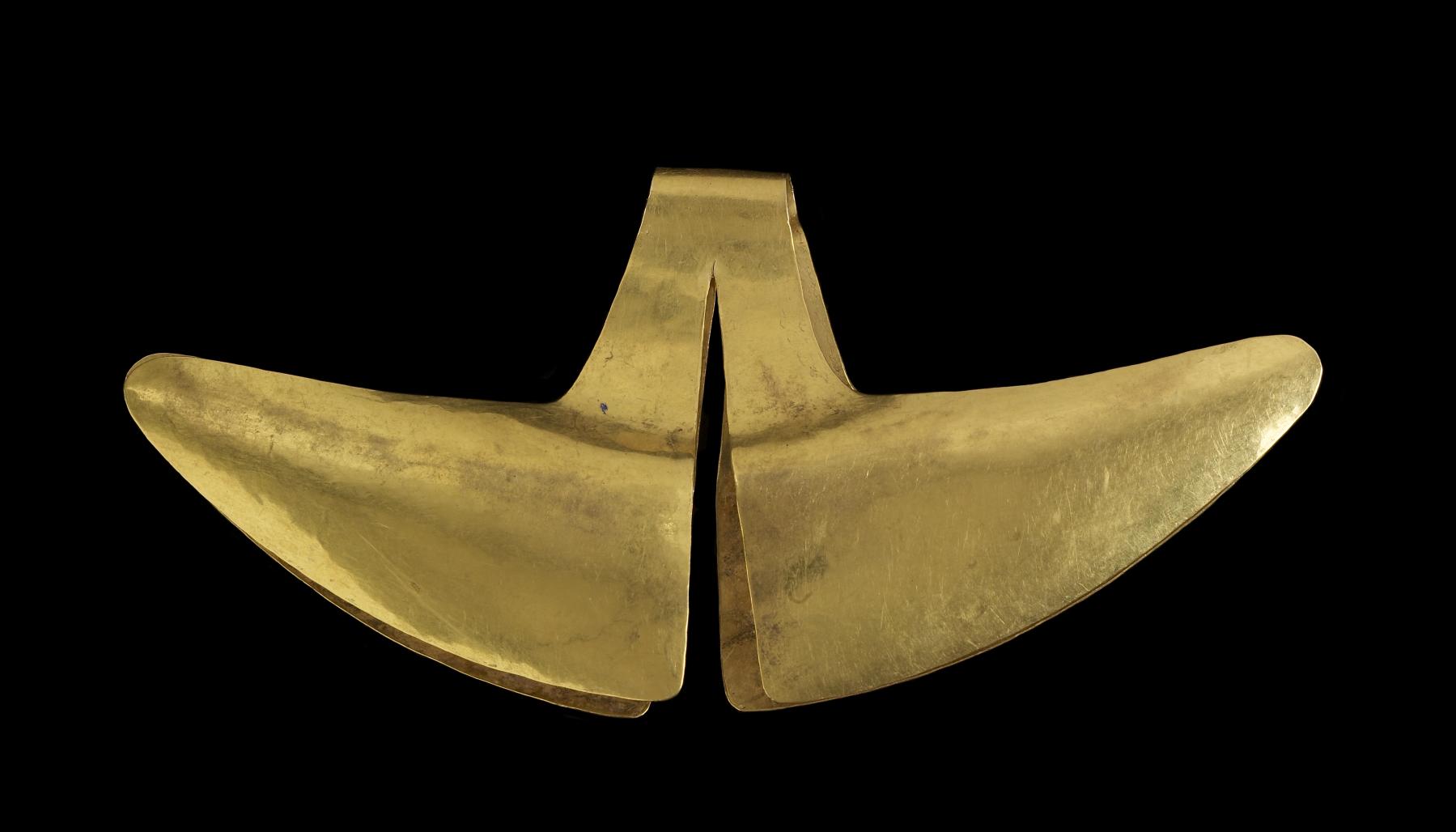Ornament
(Ancient Americas )
Fine craftsmanship typifies the precious metal jewelry worn by the Moche elite. From cast decorative edgings, to hammered sheets of gold rolled into shafts, to the intricate inlays of semiprecious stones, these astonishing ornaments embellished members of the elite. Not only did the dazzling artworks glitter in the brilliant desert sun, symbolically bathing the wearer in the power of the golden orb, but their symbolic imagery and exceptional artistry enhanced the status and authority of the bejeweled person.
Provenance
Provenance (from the French provenir, 'to come from/forth') is the chronology of the ownership, custody, or location of a historical object. Learn more about provenance at the Walters.
Economos Works of Art; purchased by John G. Bourne, Santa Fe, New Mexico, between 1990 and 1999; given to Walters Art Museum, 2013.
Exhibitions
| 2015 | Gold of the Ancient Americas. The Walters Art Museum, Baltimore. |
| 2012-2013 | Exploring Art of the Ancient Americas: The John Bourne Collection Gift. The Walters Art Museum, Baltimore; Frist Center for the Visual Arts, Nashville. |
Conservation
| Date | Description | Narrative |
|---|---|---|
| 1/1/2011 | Examination | Raw gold was mostly panned from rivers; such gold often contains platinoid inclusions—tiny bits of other kinds of metals such as iridium and osmium, which have higher melting points than gold. One of these inclusions within the surface of the Ornament can be seen in photographs taken under the microscope. This is evidence that the object was made from panned gold. |
Geographies
Peru, North Coast (Place of Origin)
Measurements
H: 2 7/16 x W: 5 1/4 x D: 7/8 in. (6.2 x 13.4 x 2.2 cm)
Credit Line
Gift of John G. Bourne, 2013
Location in Museum
Not on view
Accession Number
In libraries, galleries, museums, and archives, an accession number is a unique identifier assigned to each object in the collection.
In libraries, galleries, museums, and archives, an accession number is a unique identifier assigned to each object in the collection.
2009.20.71


